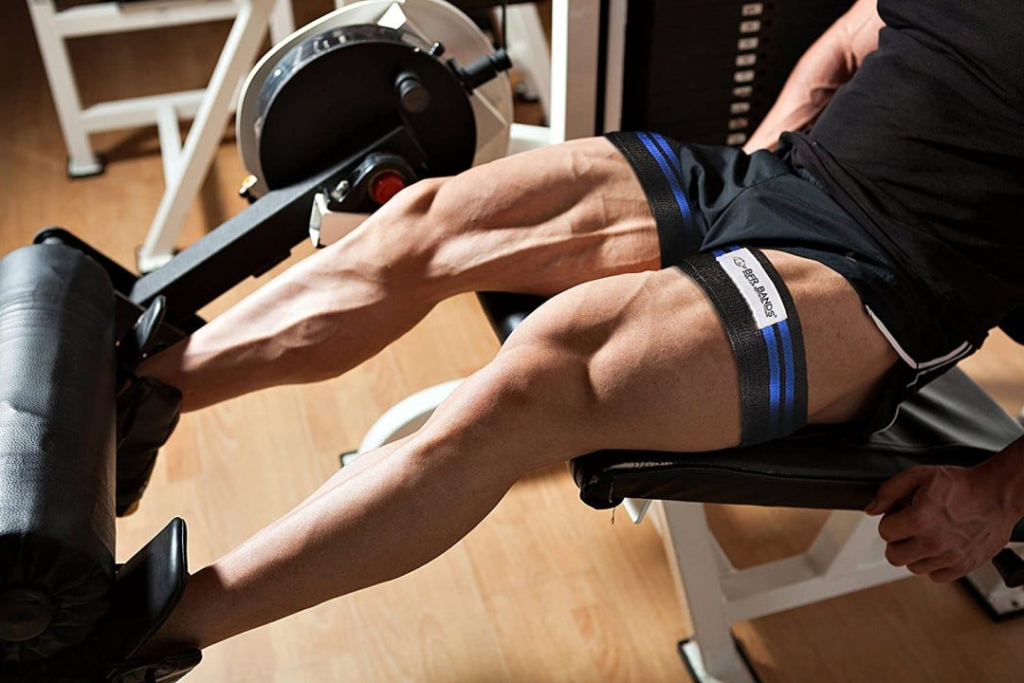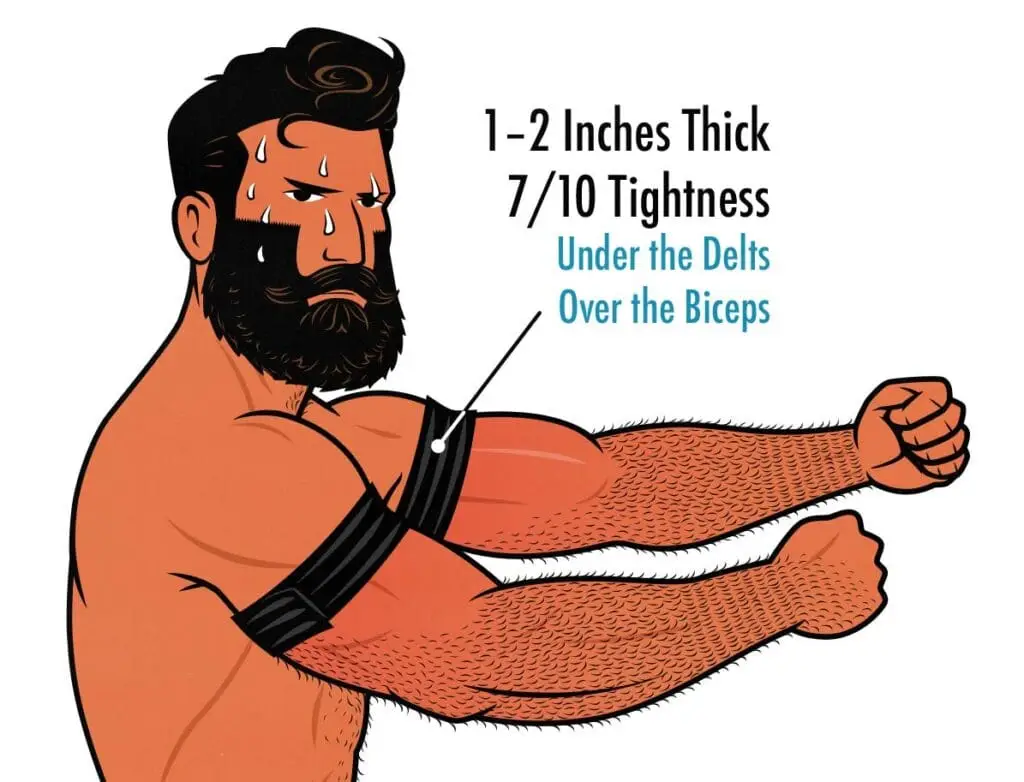Maximizing Muscle Growth with Blood Flow Restriction Training
Blood Flow Restriction (BFR) training, sometimes called occlusion training, is a cutting-edge method that enables significant muscle growth and strength gains without the need for heavy weights. This revolutionary technique involves restricting blood flow to working muscles, allowing athletes and fitness enthusiasts to experience results typically associated with high-intensity lifting—all while reducing the strain on joints and minimizing recovery time. With roots in both clinical rehabilitation and advanced athletic training, BFR is increasingly recognized as a powerful tool for muscle development, injury recovery, and overall performance enhancement.
What is Blood Flow Restriction Training?
BFR training involves applying a specialized band or cuff to restrict blood flow partially to a specific muscle group. By allowing blood to enter the muscle but restricting it from leaving, this controlled environment triggers muscle hypertrophy (growth) and strength adaptations even with low-load exercises, usually at only 20-30% of a person’s one-rep max (1RM). This training method allows you to work your muscles intensely without high resistance, making it ideal for recovery phases, injury prevention, or any time heavy lifting may be unsuitable.

How Does BFR Training Work?
The science behind BFR training is based on creating an environment within the muscle that promotes anabolic (growth) processes. When blood flow is restricted:
- Metabolic Stress Increases: As blood pools in the muscle, it creates a buildup of metabolites like lactate, which stimulate muscle growth.
- Muscle Fiber Recruitment: Under low oxygen conditions, your body recruits more fast-twitch muscle fibers (the type most responsible for growth and power) to compensate for the increased stress.
- Hormonal Response: BFR triggers the release of growth hormone and other anabolic hormones at levels typically seen only with intense strength training.
- Reduced Load on Joints: By using lower weights, BFR reduces stress on joints and tendons, making it a valuable option for those who need to avoid heavy lifting.
Blood Flow Restriction Training and Hypertrophy
Hypertrophy, or muscle growth, is driven by mechanical tension, metabolic stress, and muscle damage. BFR training enhances hypertrophy primarily through metabolic stress and fiber recruitment:
1. Enhanced Muscle Growth with Light Weights
BFR allows you to achieve substantial muscle growth using only 20-30% of your maximum load, making it an excellent option for those seeking hypertrophy without the need for heavy lifting.
2. Accelerated Recovery
For individuals recovering from injury or those in rehabilitation, BFR provides a safe, effective way to prevent muscle atrophy and build strength with minimal joint strain. Many physical therapists incorporate BFR as part of post-surgery recovery plans due to its effectiveness in maintaining muscle mass.
3. Increased Strength and Endurance
BFR can improve muscular endurance and strength without the muscle breakdown typically caused by high-intensity training. This method promotes cellular adaptations that support stamina and muscular resilience over time.
4. Efficient Time-Saving Workouts
BFR sessions are typically shorter, as the higher metabolic stress and muscle activation lead to quicker fatigue, allowing you to achieve results in less time. For busy athletes and professionals, this means maximizing training efficiency.
5. Versatile and Accessible
Since BFR can be performed with body weight or light weights, it is accessible for a wide range of fitness levels and can be adapted to various workout settings, from the gym to at-home training.
Research has demonstrated that BFR training can produce similar hypertrophic gains as traditional high-load resistance training, making it an excellent alternative for individuals seeking muscle growth with less joint strain.
How to Perform Blood Flow Restriction Training Safely
To get started with BFR, you’ll need bands or cuffs designed to control blood flow safely. BFR cuffs can be applied to either the arms (just below the shoulder) or the legs (just below the hip). Follow these guidelines to ensure safe and effective training:
Choose the Right Bands or Cuffs – Use professional BFR bands that allow adjustable pressure.
Placement – Apply the bands at the top of the arms or legs (not both at the same time).
Optimal Tightness – Bands should be tight enough to restrict venous return but not completely block arterial flow (typically 40-80% of max tightness).
Select Proper Resistance – Use 20-40% of your 1RM.
Repetition Scheme – Follow the 30/15/15/15 protocol:
30 reps (first set)
15 reps (subsequent sets)
Rest 30-45 seconds between sets
Duration – Limit each session to 10-20 minutes per muscle group.
Monitor for Safety – If you experience numbness, extreme pain, or dizziness, remove the bands immediately.
Note: Ensure the bands are not too tight to avoid excessive discomfort or numbness. BFR should be done under supervision initially or with guidance from a professional, especially if you’re new to this technique.
Benefits of BFR Training
Accelerated Muscle Growth – Promotes hypertrophy similar to lifting heavy weights
Increased Strength Gains – Stimulates fast-twitch muscle fibers
Reduced Joint Stress – Effective at just 20-40% of one-rep max (1RM)
Enhanced Recovery & Rehab – Used in physical therapy to maintain muscle mass without overloading joints
Improved Endurance – Increases muscle oxygen efficiency
Sample Blood Flow Restriction Workout
Here’s a sample BFR workout for the upper body:
Bicep Curls with BFR
- 3 x 15-30 reps at 20% of 1RM
- 30 seconds rest between sets
Tricep Extensions with BFR
- 3 x 15-30 reps at 20% of 1RM
- 30 seconds rest between sets
Shoulder Press with BFR
- 3 x 15-30 reps at 20% of 1RM
- 30 seconds rest between sets
Lateral Raises with BFR
- 3 x 15-30 reps at 20% of 1RM
- 30 seconds rest between sets
This routine is ideal for increasing muscular endurance and hypertrophy with minimal weight, helping you achieve significant gains without placing undue stress on your joints.
Best BFR Exercises
Upper Body
Bicep Curls
Tricep Pushdowns
Shoulder Lateral Raises
Bench Press (light weight)
Push-Ups
Lower Body
Squats
Leg Extensions
Hamstring Curls
Calf Raises
Lunges

Safety Tips for Blood Flow Restriction Training
While BFR training is generally safe, it’s crucial to adhere to best practices to prevent potential risks:
- Start Slowly: If you’re new to BFR, begin with lower intensity and fewer sets to gauge your comfort level.
- Monitor Pressure: Do not over-tighten the bands; they should restrict blood flow but not cut it off entirely.
- Stay Hydrated: BFR can be physically demanding, so ensure you’re well-hydrated to support your muscles.
- Listen to Your Body: If you experience unusual pain, dizziness, or numbness, stop immediately and adjust your approach.
- Consult a Professional: If possible, seek guidance from a certified trainer or healthcare provider, especially if you have any pre-existing conditions.
Who Can Benefit from BFR Training?
Blood Flow Restriction training is ideal for:
Athletes & Bodybuilders – To increase muscle mass and strength while reducing wear and tear
Injured Individuals – Helps maintain muscle size and strength without excessive load
Older Adults – Supports muscle preservation and functional strength
Endurance Athletes – Improves muscle efficiency and performance
BFR training can be integrated into almost any fitness regimen, providing a low-risk way to amplify results. As with any training method, consistency, proper form, and progression are key to maximizing the benefits.
Common Myths About BFR Training
"BFR is Dangerous"
When done correctly, BFR is safe and widely used in physical therapy and sports performance. The key is proper pressure and technique.
"You Need Expensive Equipment"
While professional cuffs are ideal, affordable bands work well when used properly.
"BFR Only Works for Arms and Legs"
While primarily used on limbs, indirect systemic effects can enhance whole-body muscle growth.
Final Thoughts: Should You Try BFR Training?
If you want to accelerate muscle growth, increase strength, and reduce joint stress, BFR training is worth incorporating into your routine. Whether you’re recovering from an injury or just looking for a new way to push your limits, this method can deliver impressive results.
Unlock Your Strength Potential with BFR Training
Blood Flow Restriction training is a unique, scientifically backed method for achieving impressive gains in strength and muscle size with minimal weight. Whether you’re in recovery, looking to improve performance, or aiming to reduce the strain of heavy lifting, BFR training offers a versatile, time-efficient solution. Embrace BFR training as part of your fitness routine to experience a new dimension of muscle growth, recovery, and athletic potential.
Thanks For Reading!

